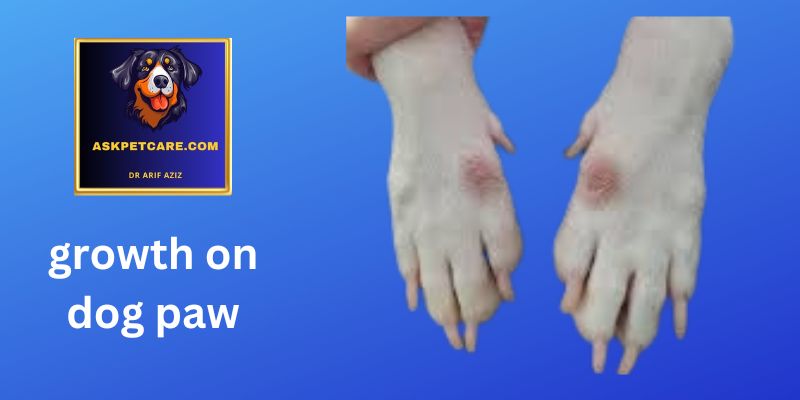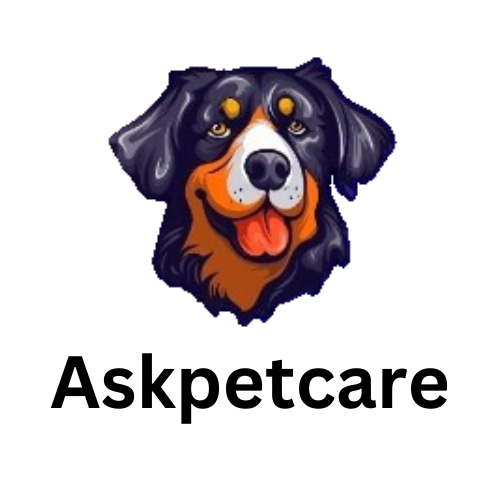Hello dog lovers I am DR ARIF AZIZ in this blog post I will explain about growth on dog paw pad. Dogs being our furry companions, deserve the highest care and attention. When it comes to their health, any unusual growth or abnormality on their paw pads can be concerning. Here’s a full explanation of what a growth on a dog’s paw pad could be.

I’ve been taking care of pets especially dogs at my clinic for a long time, exactly 14 years! I’m here to share some valuable information with you that I’ve gathered from books during my study time written by experts in veterinary medicine (DVM) and MSC (Master of Science), as well as from my own experiences working with dogs. I’ve been running my Veterinary Clinic for the past 14 year.
Growth on Dog Paw Pad. step by step
What are Warts
Warts are common skin growths that can appear on any part of a dog’s body, including the paw pads. They are caused by a virus and are usually harmless, although they can be uncomfortable for your dog if they are located in a weight-bearing area.
What are Papilloma’s
Papilloma’s are another type of skin growth that is common in young dogs. They are also caused by a virus and are typically small, raised, and fleshy. Papilloma’s usually disappear on their own within a few weeks or months.
What is Keratosis Growth on Dog Paw Pad
Keratosis is a condition that causes the skin on the paw pads to become thick, dry, and cracked. This can be caused by a variety of factors, including genetics, aging, and environmental conditions. Keratosis can be uncomfortable for your dog and can lead to infection if not treated.

Understanding Cancer
In rare cases, a growth on a dog’s paw pad could be cancerous. This is more common in older dogs and certain breeds, such as Golden Retrievers and Labrador Retrievers. If you notice a growth on your dog’s paw pad that is rapidly growing, bleeding, or ulcerated, it’s important to have it checked by a veterinarian immediately.
| Type of Growth | Description |
| Warts | Common skin growths caused by a virus, appearing anywhere on a dog’s body, including paw pads. |
| Papillomas | Another type of skin growth common in young dogs, caused by a virus. Typically small, raised, and fleshy, they often disappear on their own within weeks or months. |
| Keratosis Growth | Thickening, dryness, and cracking of paw pad skin due to factors like genetics, aging, and environment. |
| Cancer | In rare instances, growths on a dog’s paw pad can be cancerous, more prevalent in older dogs and certain breeds like Golden Retrievers and Labrador Retrievers. Rapid growth, bleeding, or ulceration warrants immediate veterinary examination. |
if you notice any unusual growth or abnormality on your dog’s paw pad, it’s always best to consult with a veterinarian for proper diagnosis and treatment.
What is growing on my dog’s paw pad?
Several different growths or abnormalities can occur on a dog’s paw pad. Here are some possibilities.
Cysts Growth on Dog Paw Pad
Cysts are fluid-filled sacs that can develop under the skin or within the paw pad itself. They may feel like soft, movable lumps.
Tumors
Tumors can be benign (non-cancerous) or malignant (cancerous). They can arise from various tissues, including the skin, connective tissue, or even bone. Tumors may appear as lumps or masses on the paw pad.
Abscesses
Abscesses are pockets of pus that form due to bacterial infection. They can cause swelling, pain, and redness in the affected area of the paw pad.
Foreign Bodies
Occasionally, foreign objects like thorns, splinters, or small stones can become lodged in a dog’s paw pad, causing irritation, inflammation, and swelling.
Infections
Bacterial, fungal, or viral infections can cause inflammation and swelling of the paw pad. Infections may be accompanied by redness, discharge, and discomfort.
It’s essential to have any abnormality or growth on dog paw pad evaluated by a veterinarian to determine the underlying cause and suitable treatment.

How do you treat a growth on a dog’s paw?
The treatment for growth on a dog’s paw depends on the underlying cause and nature of the growth. Here are some general treatment options.
First Veterinary Examination
Schedule an appointment with your veterinarian to have the growth on your dog’s paw pad examined. Your vet will perform a thorough physical examination and may recommend additional tests, such as a biopsy or imaging studies, to determine the nature of the growth.
Medical Management
Depending on the diagnosis, your veterinarian may prescribe medications such as antibiotics, anti-inflammatories, or antifungals to treat infections, reduce inflammation, or manage pain associated with the growth.
Surgical Removal of Growth on Dog Paw Pad
If the growth is benign but causing discomfort or interfering with your dog’s mobility, your veterinarian may recommend surgical removal. Surgical removal may also be necessary for malignant tumors or other aggressive growths.
Laser Therapy
In some cases, laser therapy may be used to reduce inflammation, promote tissue healing, and provide pain relief for growths on the paw pad.
Home Care
Follow your veterinarian’s instructions for at-home care, which may include keeping the paw pad clean and dry, applying prescribed medications or ointments, and preventing your dog from licking or chewing the affected area.
It’s essential to follow your veterinarian’s recommendations for monitoring and follow-up care after treatment to ensure the best possible outcome for your dog’s paw pad growth. Early detection and prompt treatment can help prevent complications and promote healing.
If you want to read more
Red growth on dog paw pad.
A red growth on a dog’s paw pad could indicate various potential issues, including infections, inflammation, tumors, cysts, or even trauma. It’s essential to have any growth or abnormality on your dog’s paw pad examined by a veterinarian to determine the underlying cause and appropriate treatment.
Here are some possible explanations for a red growth on a dog’s paw pad:
Infection
Bacterial, fungal, or viral infections can cause inflammation and redness on the paw pad. Infections may be accompanied by other symptoms such as swelling, discharge, and discomfort.

Inflammation
Inflammation of the paw pad, known as pod dermatitis, can cause redness, swelling, and irritation. Inflammation can result from various factors, including allergies, trauma, or autoimmune conditions.
Tumor or Growth
A red growth on the paw pad could be a benign or malignant tumor arising from the skin, connective tissue, or other structures. Tumors may vary in size, shape, and appearance and require veterinary evaluation for proper diagnosis and treatment.
Cyst or Abscess
Fluid-filled cysts or pockets of pus (abscesses) can develop under the skin or within the paw pad, causing redness and swelling. These growths may be tender to the touch and may require drainage or surgical removal.
Trauma or Injury
Trauma or injury to the paw pad, such as cuts, burns, or puncture wounds, can result in redness, swelling, and the formation of a growth or lesion.
| Type of Issue | Description |
| Infection | Bacterial, fungal, or viral infections can cause inflammation, redness, swelling, discharge, and discomfort on the paw pad. |
| Inflammation | Inflammation of the paw pad, known as pod dermatitis, can cause redness, swelling, and irritation |
| Tumor or Growth | A red growth on the paw pad might be a benign or malignant tumor arising from the skin, connective tissue, or other structures. |
| Cyst or Abscess | Fluid-filled cysts or pockets of pus (abscesses) under the skin or within the paw pad can cause redness and swelling. |
| Trauma or Injury | Cuts, burns, or puncture wounds to the paw pad can result in redness, swelling, and the formation of a growth or lesion. |
If you see a red spot or anything strange on your dog’s paw, it’s important to take them to the vet right away. The vet will check it carefully and might need to do some tests like taking a small sample or using special pictures to understand what’s going on. This helps them figure out the problem and decide how to fix it.
I hope you will thoroughly understand the growth on dog paw pad if still any confusion contacts me.
Here are some reference books that are considered authoritative on the topic of dog care, including nail care:
- “The Complete Dog Owner’s Manual” by Dr. Bruce Fogle
- “The Ultimate Guide to Dog Care: Everything You Need to Know to Keep Your Dog Happy and Healthy” by Amy Marder and Andrew Luescher

2 thoughts on “Growth on Dog Paw Pad: Dr Practical Tips and Tricks”